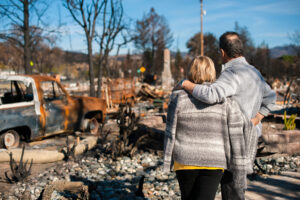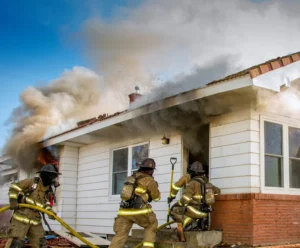In 2024, the premium landscape for fire insurance will continue to change due to a variety of factors, including geographic risks, construction materials and technological advances. Understanding these dynamics is critical for insurers and property owners to navigate the complexities of underwriting fire insurance.
Location plays an important role in determining the cost of fire insurance. Properties located in high-risk areas, such as wildfire-prone areas or densely populated urban centers, will typically have higher premiums due to increased fire danger. Additionally, the type of building materials used and the presence of fire protection systems can also affect insurance rates. Buildings constructed with fire-resistant materials and equipped with sprinkler systems generally charge lower insurance premiums.
Over time, the cost of fire insurance fluctuates based on a variety of economic and environmental factors. Climate change has become a major cause of increased fire risk, leading to higher insurance premiums in vulnerable areas. To limit these rising costs, property owners can take proactive steps such as improving fire safety protocols and investing in building upgrades to increase resiliency.
Technological advances are also changing the fire insurance industry. Data analytics and IoT devices allow insurance companies to better assess risk and detect potential fire hazards early, reducing the chance of widespread damage and expensive claims. Furthermore, AI-powered solutions streamline claims processing and increase overall efficiency, benefiting both insurers and policyholders.
Regulatory factors further influence the cost of fire insurance, with government policy and compliance requirements determining coverage and premiums. Homeowners should stay informed of relevant regulations and ensure compliance to avoid potential gaps in coverage.
Looking ahead, industry experts predict that fire insurance trends will continue to evolve, driven by the changing risk landscape and technological advancements. Property owners must remain vigilant and proactive in managing fire risks to limit potential financial losses and ensure adequate insurance coverage.
In summary, the research into the cost of fire insurance in 2024 shows that a dynamic landscape is emerging, shaped by factors such as geographical risks, technological innovation and regulatory frameworks. By understanding these dynamics and implementing proactive risk management strategies, property owners can effectively manage the complexities of fire insurance coverage and protect their assets from potential losses.
Frequently Asked Questions
How is the premium for fire insurance calculated?
Fire insurance premiums are calculated based on several factors, including the location of the property, construction materials, fire protection measures and claims history.
What can I do to reduce the costs of my fire insurance?
Homeowners can reduce their fire insurance costs by improving fire safety measures, fire-proofing their buildings, carrying out regular risk assessments and shopping around for competitive rates.
How does climate change affect the costs of fire insurance?
Climate change may increase fire risk in some areas, causing insurance premiums to rise due to the increased likelihood of wildfires and other fire-related events.
Are there technical solutions to limit fire risks?
Yes, technology solutions such as data analytics, IoT devices and artificial intelligence can help insurers and property owners better assess risk, identify hazards early and streamline claims processing.
What should I pay attention to when assessing my fire insurance?
When evaluating a fire insurance policy, consider factors such as coverage limits, exclusions, deductibles, and any additional endorsements or extras that may be necessary to ensure adequate protection.



